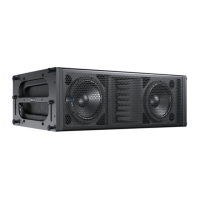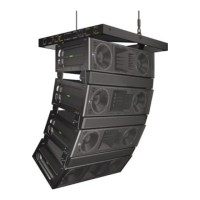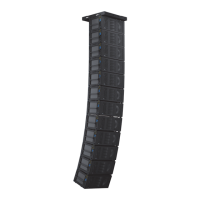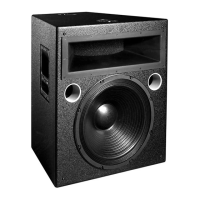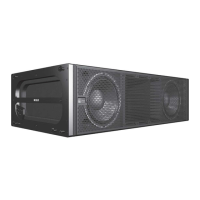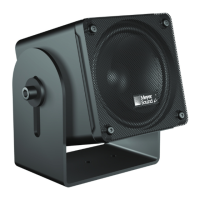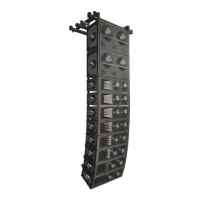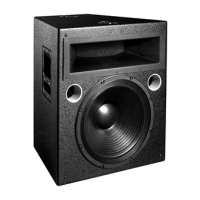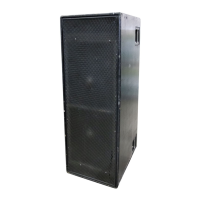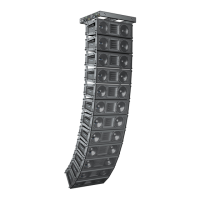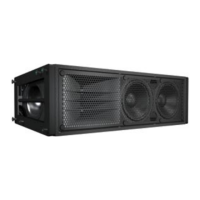
Do you have a question about the Meyer Sound M2D and is the answer not in the manual?
| Maximum Peak SPL | 142 dB |
|---|---|
| Weight | 131 lbs (59.4 kg) |
| Nominal Impedance | 4 ohms |
| Power Handling | N/A (Self-powered) |
| Power Handling (Peak) | N/A (Self-powered) |
| Low Frequency Transducer | 15" cone driver |
| High Frequency Transducer | 3-inch diaphragm compression driver |
| Amplification | External |
Key safety guidelines and precautions for operating the loudspeakers.
Guidance on navigating the manual, including icons and their meanings.
Overview of the M2D and M2D-Sub loudspeakers and their key features.
Details on the PowerCon AC mains system, voltage selection, and power protection.
Guidance on connecting multiple amplifiers and audio equipment to AC power.
Information on AC cables, connectors, and wiring color codes.
Specifies the operating voltage range and current draw for the M2D loudspeaker.
Details the operating voltage and current requirements for the M2D-Sub subwoofer.
Describes the balanced XLR input, impedance, and wiring for audio signals.
Covers M2D connections, amplification, and driver protection limiters.
Covers M2D natural convection cooling and optional fan kit for amplifier.
Details M2D-Sub amplification and TruPower limiting system for driver protection.
Describes the M2D-Sub's forced-air cooling system with dual fans for amplifier.
Explains the LEDs and buttons on the RMS user panel for system monitoring.
Describes the graphical user interface of the optional RMS software for system monitoring.
Principles of directivity and interference in line array systems.
How M2D drivers and horns optimize coverage and directivity.
Strategies for planning high-frequency coverage using splay angles.
Strategies for achieving low-frequency directionality and coupling.
Optimizing array performance with equalization channels and zones.
Integrating M2D-Sub for extended low-frequency response.
Connecting M2D and M2D-Sub loudspeakers via loop feature.
Using line drivers for gain and polarity adjustments for optimization.
Utilizing the LD-3 Lo-Cut filter for fine-tuning system response.
Using external DSPs with Meyer Sound loudspeakers for phase management.
Combining M2D arrays with 650-P subwoofer for extended low-frequency.
Introduction to the MAPP Online acoustical prediction program for system design.
Overview of the SIM audio analyzer for acoustical system measurement and analysis.
Explanation of SIM analyzer's measurement method for system characterization.
Details the MG-2D grid for flying or ground stacking M2D and M2D-Sub loudspeakers.
Describes the MG-1D grid for flying or ground stacking M2D/M2D-Sub loudspeakers.
Solutions for common problems like no audio, hum, noise, or distorted sound.
Detailed acoustical, transducer, audio input, amplifier, physical specs for M2D.
Detailed acoustical, transducer, audio input, amplifier, physical specs for M2D-Sub.
